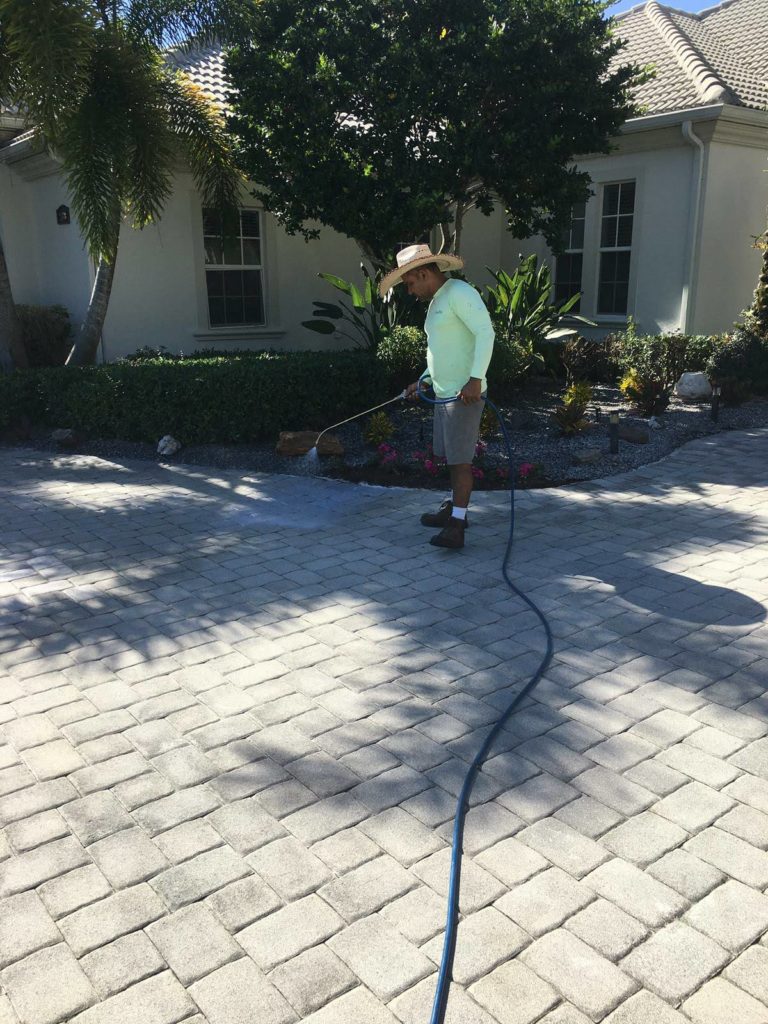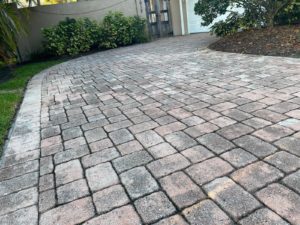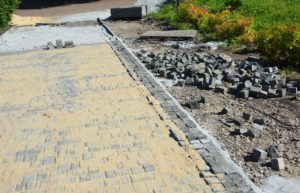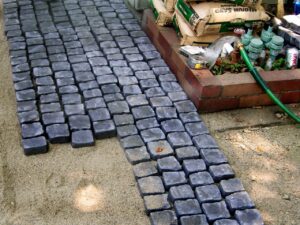Maintaining a paver patio requires several special precautions to make sure they keep their great look for years to come. An important point, for example, is how to clean pavers before sealing, so that you won’t have any problems in the future.
It’s very satisfying to see your paver patio cleaned. But to have the best final result possible, you must do the job correctly. In this article, we will walk you through some of the best options for this process.
Jump to:
What Is The Best Way To Clean Pavers Before Sealing
Cleaning pavers before sealing includes several steps that you need to follow to remove all debris from the surface. In most cases, the method you choose is specifically related to what kind of dirt you want to eliminate.
For instance, you can get rid of most dust residues just by sweeping the surface with a broom. But, this method doesn’t work if what you want to do is remove weeds, moss, or mold, for instance.
Removing Weeds Between Pavers
There are different ways to choose to kill the weeds between pavers. Bellow, we’ll give you a few ideas. You can choose the one that is more appropriate for you:
- Remove weeds by pulling them by hand
- Eliminate weeds using specific tools
- Get rid of weeds with boiling water
- Kill weeds between pavers with vinegar or salt
- Get rid of weeds by using an organic herbicide
Observe that some of these methods are non-selective, which means that they will harm nearby plants if you’re not careful.
After dealing with the weeds, use a broom and a garden hose to wash off the remaining debris.
How To Remove Moss From Pavers
You can use several methods and products to get rid of moss in pavers. Below we will list some ways to do it. Be aware that all the methods listed, even if natural, always have downsides.
- Using boiling water
- With vinegar
- Kill moss with baking soda
- Using bleach
The way to do it is simple: Apply the substance over the moss and allow it to work for a few minutes. After that, use a broom and a garden hose to wash off the remaining debris.

Getting Rid Of Mold Over Pavers
To get rid of mold, the best way to do it is by following these steps:
- Use a garden hose to wet the area;
- Prepare a solution in a bucket with a few liters of hot water and mild soap or detergent;
- Dip a nonmetallic scrubbing brush into the solution and use it to scrub the pavers;
- Repeat step 3 until you remove most of the mold;
- Wash the area with water from the hose to remove the mold and water solution with mild soap or detergent;
- To remove any remaining mold, wet the area again with the water and mild soap or detergent solution. After that, sprinkle talcum powder over the stains. Allow the talc to absorb the solution and to sit on the pavers until it is dry;
- Sweep the area with the scrubbing brush, rinse the pavers with the garden hose again and leave the whole field to air dry.
You must repeat this process regularly in areas where mold formation is more frequent. Although the process is more complicated and time-consuming, it’s one of the most effective ways to clean mold stains from pavers.
Can I Clean Pavers Before Sealing Using A Pressure Washer?
You don’t have to, but you can. A pressure washer can help you speed up the cleaning process, and is especially useful for removing weeds, mold, and moss.
Just be careful using the equipment. We recommend PSI around 1600 to 2000. The pressure washer can wash off the sand in pavers’ joints, which you’ll have to refill later on.
How Long Should Pavers Dry Before Sealing
Finally, we would like to remind you that we recommend at least 24 to 48 hours of a time gap to seal pavers. The timing may vary. The crucial thing to note is that they must be dry for the process.
At JS Brick, we have 20+ years of experience providing paver installation, supply, and maintenance services in Sarasota and surrounding cities. For a free estimate on paver cleaning and sealing services, don’t hesitate to leave us a message or a call.



